2017 Mercedes E 350d review, road test
A stretched wheelbase gives the E a big advantage over rivals, but is the extra length worth the asking price?
Published on May 29, 2017 07:00:00 AM
28,338 Views
Follow us on
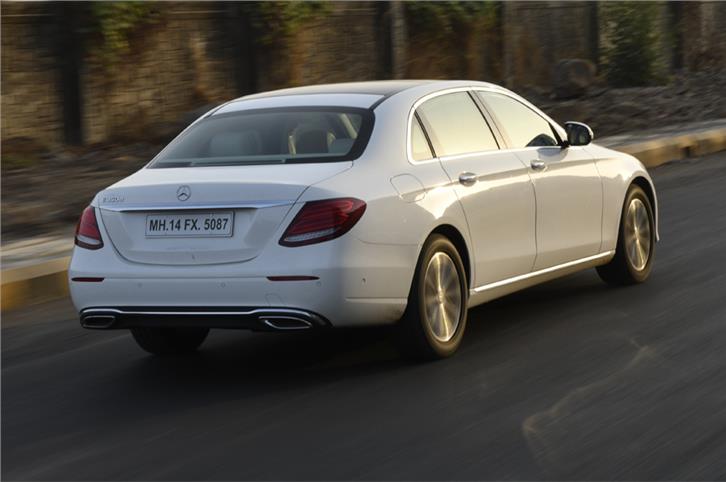
Pillowy ride at all speeds simply superb but does tend to pitch the faster you go.
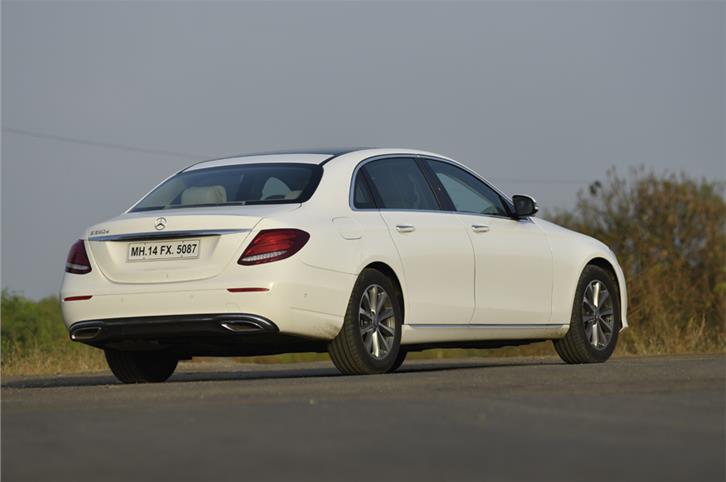
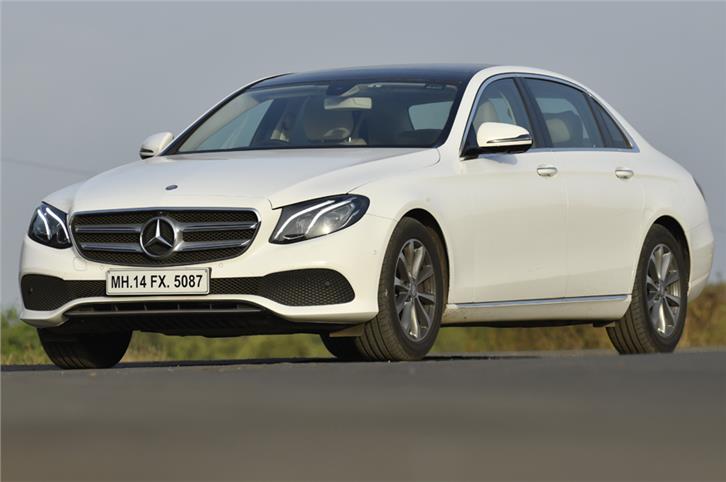
To many Indians, the E-class is the quintessential Mercedes. Yes, the A-class is the accessible one, the S-class is the flagship, the AMG GT is the halo car and the SUVs are all the rage too, but it was the E-class that launched the brand in India, and the one that’s long been the company’s bestseller; its bread-and-butter model, so to speak. The last-generation ‘W212’ E-class may have gone through two updates, including one of the most comprehensive facelifts in its history, but remained popular right until the end, even in the face of newer competition. That’s because it got its fundamentals right – solid build, back seat comfort, impeccable ride, refinement and smooth, strong engines; everything you expect in a Merc.
However, since rivals these days have become more competent, Mercedes wanted to make sure the W212’s successor wouldn’t just compete, but would also dominate the segment. That’s why it’s not called the W213, but rather the V213. That’s the model code for the long-wheelbase E-class, and India is the first and only country to get this model in right-hand drive. This means it had to be specially engineered for us, at a not-inconsiderable cost too, and that cost does reflect in the car’s price, which is well above the rest of the segment. But then, in a way, the car too is almost creating a sub-segment of its own. The pay-off seems pretty clear – in a class where just about every owner is chauffeur-driven, more space in the back is the greatest advantage. But has that come at a cost other than just the price itself? And does the V213 still have everything customers want from the ‘original’ Mercedes? That’s what we’ll find out.
Design
For the last four generations, the E-class always looked distinct from the rest of the core Mercedes-Benz sedan range, usually by virtue of its headlamps and tail-lamps, which were different from the S-class and C-class. Not anymore. In line with the company’s latest ‘Sensual Purity’ design language, the three cars now follow a sort of ‘Russian Doll’ effect, much like many other luxury sedan families do. At first glance, unless you’re a serious Mercedes aficionado, it’s really hard to tell the E-class apart from its siblings. The massive length will at least tell you it’s not a C-class, but you could still mix it up with the S. Strictly speaking, that’s not a bad thing at all, as it is a very attractive car. Curvaceous and swoopy, there’s not a straight line in sight, and as with the outgoing E, you no longer get the traditional ‘radiator’ style grille in India, only the sportier one with the big Mercedes star in the centre. It looks visibly stretched too, and that 3,079mm wheelbase really makes itself known. The interesting detail is the rear doors; they don’t include the rear quarter glass, which is instead attached to the D-pillar like in the Maybach S-class.
The headlamps again look very similar to the ones on its siblings, ◊ ∆ but here there are two LED daytime running lamp elements instead of one in each lamp, a throwback to the quad-headlamp layout of the previous cars. The tail-lamps are virtually identical to the C’s, but Merc uses matte reflector elements meant to resemble crushed crystal, to make the E stand out. The shape overall is very stately, but the only letdown is the wheels. While rivals have all moved up to 18-inch wheels, Mercedes has stuck with 17s on higher profile tyres, which though potentially beneficial from a comfort standpoint, is not quite as effective aesthetically, and that becomes especially apparent because of the stretched wheelbase.
Under the skin is Merc’s aluminium-intensive MRA platform, highly elongated of course, from the C-class, and as ever, it uses a longitudinally mounted engine (at the front) that drives the rear wheels. The suspension, however, depends on which variant you choose. While the base E 200 petrol uses steel springs, the E 350d we’re testing here has adaptive, three-chamber air suspension at all four corners.
Interior
Ever since the S-class, Mercedes’ interiors have been on another level, be it in terms of design, materials or build quality, and things are no different here. In fact, the E-class’ interior design is a tidy mix of elements from the C-class and S-class. Like the C, there’s a slightly sporty air to it, with slimmer wood panels and more complex surfacing on the dashboard. Like the S, however, the dash is horizontally oriented and centred around four small, elegant AC vents, above which would have sat two 12.3-inch TFT screens side by side, for instrumentation and infotainment respectively. However, the Indian E-class doesn’t get this, and instead the instrument cluster is a set of conventional analogue dials. Sure, there is a high-res colour screen between said dials, but it’s clear that this is the lower-spec option because of the large rectangular frame it sits in, meant to house the screen. Still, there’s little else to complain about here, as fit and finish is superb and the materials used feel really rich. We particularly like the un-veneered strip of wood that curves across the middle of the dashboard and onto the door pads. The front seats are just what you’d expect: comfy, generously bolstered and not sporty in the slightest. They offer a lower squab extender for additional thigh support, but they aren’t heated or cooled, which seems an odd omission in a car of this price. Many will also rue the use of faux ‘Artico’ leather instead of real leather for the upholstery, but truthfully, once you’re in place, it hardly matters.
The place to be in the new long-wheelbase E is really the back seat. The 140mm wheelbase stretch has resulted in a 125mm increase in rear kneeroom and it’s almost as much as you get in the bigger S-class, give or take a millimeter. With the added room comes a few perks. The rear seatbacks recline and once they’re all the way back, sinking your head into the soft pillow on the head restraint is an invitation to doze off. Note, however, that unlike the S-class, the seat base doesn’t move, just the backrest. The best part is you can still use it as a five-seater if you flip the centre armrest up. Other perks include illuminated vanity mirrors in the roof, the dual sunroofs (now almost de rigueur with Mercs) and additional switches on each rear door. These let you operate not only your own window and sunblind, but also those on the other side, as well as the rear sunblind and the sunroof. The left side passenger can also use their seat controls to move the front passenger seat forward for extra legroom. The seats here too are just superb, and mercifully don’t suffer from the same lack of thigh support as the C-class. It’s not all perfect though, as strangely, there are no cupholders in the back (you can buy an accessory) and no rear entertainment screens or controls of any sort (Chinese cars get a tablet controller). The real issue, though, is that, like the previous car, the air con, though a three-zone system, doesn’t cool the rear of the cabin quickly enough, and the V213 has a much larger area than the W212 did.
Performance
The E 350d uses Mercedes’ venerable 2,987cc turbo-diesel V6 that produces 258hp and 620Nm of torque. Interestingly, that’s 7hp less than the last-generation E 350 CDI, but the bigger difference is that the E-class now uses Merc’s excellent new nine-speed torque-converter automatic instead of the dated seven-speeder.
Prod the start button and it’s very refined at idle, staying that way until about 2,500rpm, after which you do get a slight grumble. It’s not quite as silent as in the S-class, but it’s still very good. Know from the outset that this is not a sporty motor, nor should it be, and though there are four driving modes to choose from – Eco, Comfort, Sport and Sport+ (plus a customisable Individual setting) – none of them ever feel racy. What you get instead is a silky smooth power delivery, aided greatly by the gearbox which shifts its way around most of the turbo lag. The shifts are barely perceptible in Eco and Comfort modes, and only in Sport and Sport+ will you feel a slight hiccup on some downshifts. It responds well to tugs on the paddles too, but owing to the car’s relaxed nature, that’s something you’ll never find yourself doing.
It’s best to drive it gently in any mode, although it must be said that Eco just feels too lethargic by any standards, and even the pause when you put your foot down in Comfort can be a little frustrating if you suddenly want to get a move on. The Sport powertrain setting is the best balance – responsive without being too aggressive. On the whole, you get the sense there’s a healthy power reserve at your disposal should you ever need it. At 1,920kg, this is a heavy car, but it’s surprisingly quick, with 100kph coming up in 7.0sec, the 20-80kph sprint dealt with in 4.34sec and 40-100kph in 5.24sec. That said, you do have to be a little cautious when dishing out the power, as that 620Nm can easily overwhelm the rear tyres. In Sport+ mode especially, where the ESC is a little relaxed, smashing your foot down will definitely result in wheelspin. As with all modern Mercs, there’s no dedicated button to turn the ESC off, but you can find the setting in the menus. If you do choose to drive the E-class quickly in Sport+ mode, you can, but though it’s quick, it never feels as exciting as its six-cylinder rivals. You will be happy to note, however, that the brakes are very effective with a good feel at the pedals.
The relaxed nature of the E-class works well out on the highway, where no matter which powertrain setting you choose, even Sport+, it will settle into a nice, high-speed, low-rpm cruise. Still, we feel Sport is once again the best mode, being both relaxed enough and also eager enough in case you want to suddenly overtake.
Handling
As we mentioned earlier, the E 350d gets air suspension at all four corners and that, combined with the extra length, really makes it feel like an S-class to drive. There’s that inherent pillowy quality to the ride that is just supremely comfortable at low speeds. It’ll tackle small bumps and potholes with the subtlest ‘whump’ entering the cabin.
However, here too, the chosen driving mode makes a big difference. We don’t recommend the Comfort suspension unless you’re driving in bumper-to-bumper traffic. Even at low speeds it’s too floaty and bouncy, creating a constant rocking motion inside the cabin. Sport offers a much tidier ride and it’s still supremely comfortable. Of course, that’s even more important when you’re going faster, where Comfort will bounce you around a fair bit on the highway.
The handling, like the motor, can’t ever be called sporty. The steering is super light but does weigh up nicely with speed. It’s also quick off-centre which does help you move this large car with surprising ease. Choosing Comfort steering is great for parking and traffic, but out on the highway, you’d want to put it in Sport for a more confident feel. Cornering? The long-wheelbase E-class does that too, but it doesn’t enjoy it and you are always aware of its massive length. And just as immense is the body roll, which is typical of an air-sprung sedan – expectedly, it’s better contained in Sport or Sport+ mode, but it’s never truly eliminated.
You have to be really careful with this E-class over larger speed breakers. For one, the long wheelbase means it has a terrible ‘breakover’ angle, and then factor in the soft air suspension which could bounce the car onto the speed bump if you approach too quickly. The result is a propensity for frequent belly scraping. You can raise the entire car via a button on the centre console, but the process takes 10-15 seconds, making it a bit too impractical for constant use.
Fuel Efficiency
The combination of a big, heavy car and a six-cylinder motor mean that fuel economy isn’t spectacular, but it’s not too bad either. The E 350d managed 8.49kpl in the city and 13kpl out on the highway, and for the amount of power and torque you have at your disposal, that’s pretty good. And the 66-litre fuel tank makes for quite a decent cruising range of 710km between city and highway usage. Thanks to the clever nine-speed auto which knows when to prioritise high gears for economy based on your inputs,if you drive gently, you could even exceed these numbers.
Infotainment
Mercedes’ proprietary Comand system has got a welcome update. Menus now open from the side (like BMW’s iDrive) rather than the top and bottom, making it much more intuitive to navigate. There’s also the addition of tiny touch pads on the steering wheel to control the infotainment screen and multi-info screen, respectively. However, it is still relatively tricky to use on the go as it’s not always clear whether you have to twirl, click, nudge or swipe to access functions. Moreover, the shortcut buttons are on the dash and therefore separated from the main controller, making them almost redundant. Still, it is an improvement and the high-res screen is super crisp.
Tech Specs 
Copyright (c) Autocar India. All rights reserved.


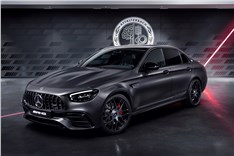
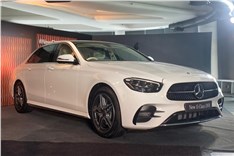
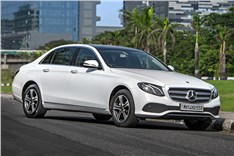

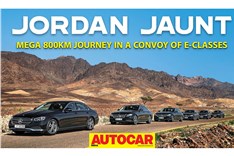


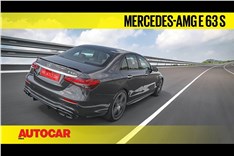

 Engine
Engine Transmission
Transmission Braking
Braking Efficiency
Efficiency Acceleration
Acceleration Max speeds in gear
Max speeds in gear Body
Body Suspension
Suspension Steering
Steering Brakes
Brakes Dimensions
Dimensions
Comments
Member Login
Personal Details
No comments yet. Be the first to comment.